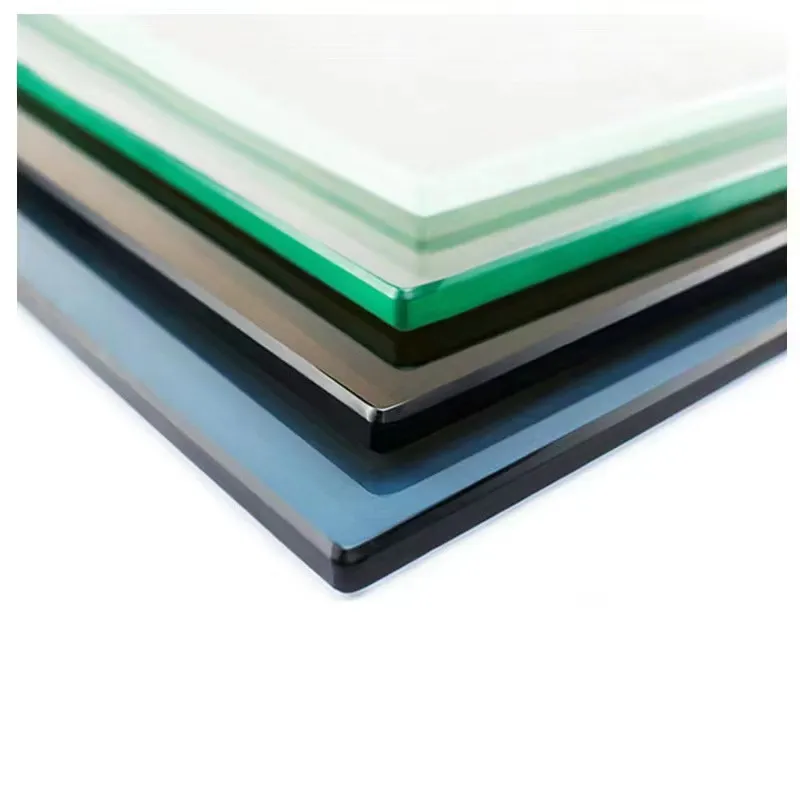The Fascinating World of Low-Iron Glass
Low-iron glass, often hailed for its exceptional clarity and aesthetic properties, has carved a niche for itself in various industries, particularly in architecture and luxury goods. Unlike traditional glass, which contains iron impurities that give it a greenish tint, low-iron glass is manufactured with a significantly reduced iron content. This reduction enhances the transparency of the glass, making it a preferred choice for applications where clarity and color accuracy are essential.
The Manufacturing Process
The production of low-iron glass begins with high-quality raw materials, including silica sand, soda ash, and limestone. In standard glass-making processes, iron content typically comes from impurities in these raw materials. However, in the production of low-iron glass, manufacturers use refined raw materials with minimal iron content. This careful selection is critical as it directly influences the glass's optical properties.
The glass is melted at high temperatures, typically around 1600 degrees Celsius. During this melting phase, the lower iron content results in a cleaner, clearer molten glass. Once melted, the glass can be shaped and processed into various forms, ranging from thin sheets for windows to intricate designs for decorative items.
Applications in Architecture
One of the most significant applications of low-iron glass is in modern architecture. Architects and designers favor this type of glass for its transparency and ability to let in natural light without the green tint associated with standard glass. This property makes buildings appear more open and inviting while enhancing the aesthetic appeal of the structure.
Low-iron glass is often used in facades, skylights, and curtain walls, where maximum light transmission is desired. Buildings constructed with low-iron glass can achieve impressive energy efficiency by leveraging natural light, thereby reducing the need for artificial lighting during the day. Moreover, the glass's clarity allows for unobstructed views of the surroundings, creating a seamless integration between indoor spaces and the outdoor environment.
Benefits in Art and Design
low iron glass
Beyond architecture, low-iron glass has gained popularity in the art world, especially for framing artwork, photographs, and prints. Artists and collectors recognize that low-iron glass protects their pieces from UV light while providing a clear view of the artwork without distortion. This is crucial for preserving the integrity and colors of the art, ensuring that viewers experience the piece as intended.
Furthermore, in the realm of luxury goods, low-iron glass adds a touch of elegance to products ranging from high-end tableware to sophisticated aquarium enclosures. The crystal-clear quality enhances the visual display of the items, making them more attractive to consumers. As the luxury market continues to evolve, the demand for low-iron glass products remains robust, driven by consumers' desire for high-quality materials.
Environmental Considerations
The production of low-iron glass is not without environmental implications. While the glass itself is recyclable, the manufacturing process requires energy-intensive operations, contributing to carbon emissions. However, many companies are now adopting more sustainable practices, including using recycled glass cullet in the production process, which helps to reduce energy consumption.
Moreover, low-iron glass is increasingly being integrated into energy-efficient building designs. Its use in solar panels and other green technologies is on the rise, as the transparency it offers allows for optimal performance in such applications. Developers and architects are recognizing the potential of low-iron glass to contribute to environmentally sustainable building practices.
Conclusion
Low-iron glass is a remarkable material that blends functionality with aesthetic appeal. Its applications in architecture and design reflect a growing trend towards transparency and light in modern spaces. As industries continue to innovate and seek sustainable solutions, low-iron glass is likely to play a pivotal role in shaping the products and environments of the future.
In summary, low-iron glass stands out as a significant advancement in glass technology. Its clarity, versatility, and sustainability make it a vital component in various sectors. As we move forward, we can expect to see even more creative uses for this exceptional material, further demonstrating its importance in contemporary design and architecture. Whether viewed in a towering skyscraper, a beautifully framed piece of art, or an exquisite luxury item, low-iron glass is set to leave an indelible mark on our visual landscape.
 Afrikaans
Afrikaans  Albanian
Albanian  Amharic
Amharic  Arabic
Arabic  Armenian
Armenian  Azerbaijani
Azerbaijani  Basque
Basque  Belarusian
Belarusian  Bengali
Bengali  Bosnian
Bosnian  Bulgarian
Bulgarian  Catalan
Catalan  Cebuano
Cebuano  Corsican
Corsican  Croatian
Croatian  Czech
Czech  Danish
Danish  Dutch
Dutch  English
English  Esperanto
Esperanto  Estonian
Estonian  Finnish
Finnish  French
French  Frisian
Frisian  Galician
Galician  Georgian
Georgian  German
German  Greek
Greek  Gujarati
Gujarati  Haitian Creole
Haitian Creole  hausa
hausa  hawaiian
hawaiian  Hebrew
Hebrew  Hindi
Hindi  Miao
Miao  Hungarian
Hungarian  Icelandic
Icelandic  igbo
igbo  Indonesian
Indonesian  irish
irish  Italian
Italian  Japanese
Japanese  Javanese
Javanese  Kannada
Kannada  kazakh
kazakh  Khmer
Khmer  Rwandese
Rwandese  Korean
Korean  Kurdish
Kurdish  Kyrgyz
Kyrgyz  Lao
Lao  Latin
Latin  Latvian
Latvian  Lithuanian
Lithuanian  Luxembourgish
Luxembourgish  Macedonian
Macedonian  Malgashi
Malgashi  Malay
Malay  Malayalam
Malayalam  Maltese
Maltese  Maori
Maori  Marathi
Marathi  Mongolian
Mongolian  Myanmar
Myanmar  Nepali
Nepali  Norwegian
Norwegian  Norwegian
Norwegian  Occitan
Occitan  Pashto
Pashto  Persian
Persian  Polish
Polish  Portuguese
Portuguese  Punjabi
Punjabi  Romanian
Romanian  Russian
Russian  Samoan
Samoan  Scottish Gaelic
Scottish Gaelic  Serbian
Serbian  Sesotho
Sesotho  Shona
Shona  Sindhi
Sindhi  Sinhala
Sinhala  Slovak
Slovak  Slovenian
Slovenian  Somali
Somali  Spanish
Spanish  Sundanese
Sundanese  Swahili
Swahili  Swedish
Swedish  Tagalog
Tagalog  Tajik
Tajik  Tamil
Tamil  Tatar
Tatar  Telugu
Telugu  Thai
Thai  Turkish
Turkish  Turkmen
Turkmen  Ukrainian
Ukrainian  Urdu
Urdu  Uighur
Uighur  Uzbek
Uzbek  Vietnamese
Vietnamese  Welsh
Welsh  Bantu
Bantu  Yiddish
Yiddish  Yoruba
Yoruba  Zulu
Zulu 

